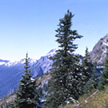| Report Documents
|
|
|
| |
| Map Plotfiles
|
-
No files of this type available
|
| |
| Data Files
|
-
No files of this type available
|
| |
| Digital Map Files
|
-
No files of this type available
|
| |
| Image Document
|
-
No files of this type available
|
| |
| Video Files
|
-
No files of this type available
|
| |
|
All Documents
|
|
|
| Contact
|
|
-
If you have any questions on the information presented, or require additional report data or attachments, please contact the Report Contact
|
|
|
In spring 2010, Fisheries and Oceans Canada (DFO) organized an assessment of salmon spawning habitat in the lower Theodosia River. Participants included fisheries staff from Sliammon First Nation, BC Conservation Foundation and DFO. The study's goal was to determine optimal flows required to support chum salmon spawning in historical areas of the lower river.
|
Author: J.D.C. Craig; BC Conservation Foundation
|
|
|
Date Published: Feb 2011
|
Report ID: 33828
|
Audience: Government and Public
|
This document should be paired with results of a flow assessment completed in 2011 by KWL Associates (Tech Memo - Summer Flow Distribution Assessment, December 13, 2011, file 0673-020).
In spring 2010, Fisheries and Oceans Canada (DFO) organized an assessment of salmon spawning habitat in the lower Theodosia River, 25 km north of the City of Powell River, BC. Study participants included fisheries staff from Sliammon First Nation (SFN), BC Conservation Foundation (BCCF) and DFO. The study's goal was to determine optimal flows required to support chum salmon spawning in historical areas of the lower river.
Discharge and spawning habitat conditions in the two channels of the lower Theodosia River were measured over a range of river stage conditions. Data loggers installed in the channels during the study produced hourly stage data that were combined with field discharge measurements to produce stage-discharge relationships and seasonal hydrographs for each channel for the period April 21 to November 16, 2010.
Habitat suitability index curves describing chum spawner depth and velocity preferences were used to determine how site usability varied with discharge. Through analysis of the six sets of field data collected spring through fall, habitat suitability for chum spawners appeared to reach optimal conditions with flows of 6 m3/s in the T3 primary channel and 2 m3/s in the T1 secondary channel. However, T1 typically receives ~14% of the aggregate lower river discharge during the spawning periods, meaning that optimal conditions in both channels does not occur simultaneously.
An analysis of conditions in one channel when conditions in the other are optimal showed that supplying T3's optimal 6 m3/s discharge and ~1.0 m3/s to the T1 secondary channel (i.e., aggregate ~7 m3/s to lower river) generates the best conditions overall.
This project was co-funded by Living Rivers-Georgia Basin/Vancouver Island (2006-11), a program of the BC Living Rivers Trust Fund, and Natural Resources Canada's Regional Adaptation Collaborative in British Columbia.
|
Report Type
| |
Fish and Aquatic Habitat Information |
| |
Subject
| |
Fish Species - Chum Salmon - Oncorhynchus keta |
| |
Fish Species - Salmon (General) - Oncorhynchus spp. |
| |
Region - Lower Mainland |
| |
Fish and Fish Habitat - Channel Assessment |
| |
Fish and Fish Habitat - Habitat and Stream Assessment |
| |
Watershed Groups - 900 - West Coast Rivers (South of Cape Caution) |
| |
Water Information - Hydrometric / Hydrology |
| |
|
|
